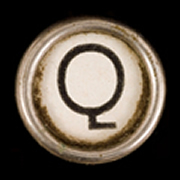
Hoi An is famous for its tailors and dressmakers. Every second shop in the old town is one or the other and people flock from around to world for the custom made suits and silks. That’s definitely what Amy had come for and after some not so gentle persuasion it’s what I also got.
We caught a surprisingly comfortable overnight train from Hanoi down to Da Nang. The taxi ride south to Hoi An provided a horrifying premonition of the Floridaeske development that is underway on that coastline strip. Our senses were assaulted for the majority of the thirty-minute taxi ride by an endless procession of outrageously ostentatious beachfront resorts, all half completed. Every passing kilometer further diminished my expectations for Hoi An but I needn’t have worried, we swung a right and headed about five kilometres in from the coast until we arrived at the little gem that is Hoi An.
At Amy’s behest we got to work rectifying the clothes situation post haste. Along the way we encountered many people who were in the same mission as us but it seems they had all done their homework on the net, researching reviews of the various tailors and dressmakers on blogs before committing to getting anything made. Amy and I went old school instead. We walked the streets and looked at the actual products themselves. That is how Amy found Yaly and I found Mr Xe.
Mr Xe is a frenzied but friendly little man who spends his life in a little tailor shop set on a corner in the heart of the Hoi An old town. Camp as they come, when it comes to suits, he is an absolute perfectionist. We were walking along the street went his displays caught our eye and we stopped for a closer look. Three minutes later Amy had talked me into getting a suit made.
I was expecting the process to be more tedious than sitting through a friend’s holiday slide show but I certainly got more than I bargained for with Mr Xe. I loved it. My fittings involved me standing their while Mr Xe meticulously pruned and straightened the said garment before taking a step back and declaring either “I am happy!” or “I’m not happy!” In the case of the latter the article was sent back to the sewer for alteration. At one point I was bundled out of the shop still in my suit, handed an umbrella before driven through pouring rain to the sewer’s house for some personalized alterations.
I am sure I could have gotten a suit cheaper if I had of gone elsewhere but I doubt I could get have gotten a better one. I had five fittings over three days, Amy had nearly twice as many for all of her faboulous creations.
In between we enjoyed the many other joys Hoi An has to offer. Despite the development going on around it the old town has maintained its charming traditional architecture. Even sleeping there was like going back in time, Minh A Ancient Lodging House had it all, ornate hard wood paneling and beams, partitioned rooms, a stone well and rising damp. Then there is also the amazing local specialty dishes, including: “white rose” steamed shrimp dumplings; “cau lau” noodles with a mix of spouts and greens, topped with sliced pork and served in a savory broth; and fried wonton. Apparently the nearby beach is really nice but as it rained constantly for the entire duration of our three-night stay there we confined ourselves to the town and aren’t in a position to comment.
Amy went to Hoi An on a shopping mission. Four days later I left with two two-piece suits, two extra slacks, six shirts and seven ties. If had a job I would look like a consummate professional.













